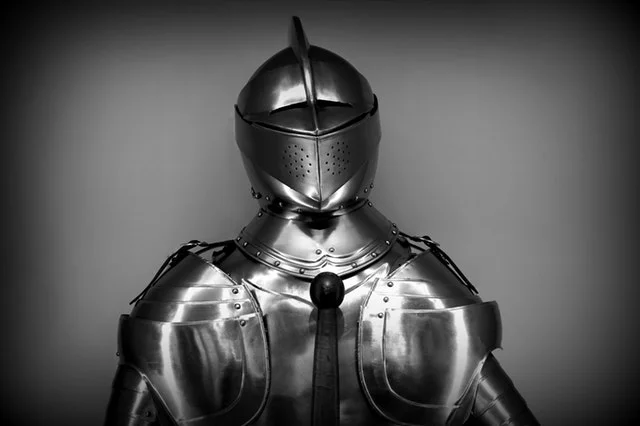Is Your Child's Phlebotomist Your Friend Or Your Foe?
Did you know that you have a voice in deciding who is going to draw your child’s blood?
The anxiety one feels as a parent of a child with a medical condition leads one to feel as if every blood draw must happen no matter what. Guess what?
It’s more important that it happen in the best possible way, than any way possible.
If the phlebotomist (the lab technician who draws blood) you’re assigned to is treating your child’s arm like a dartboard, is not being compassionate, is insisting that your child be pinned down, or doing anything that’s making your child feel unsafe, you have the right to request another phlebotomist!
I’m a New Yorker, I’m nearly six feet tall, and I’ve got a really loud voice (so my children tell me) but, for the first few years of my son’s life, any time I entered a lab I felt as if I had to do what I was told. Take a ticket. Wait in line. Watch the awful kid movie that’s playing on the screen. Go with the assigned phlebotomist. Wrong!
When Quinn was three, we showed up for our blood draw to discover that the fast, efficient, slightly cranky (but trustworthy) phlebotomist was absent. In her place was a Russian woman who had done a total botch job on Quinn’s arm (and soul) in a previous visit.
The howling that filled the hallway along with the packed waiting room, was a tribute to her lack of skill. While I’m sure that she was doing her best, it wasn’t good enough for my child who had already been through enough.
It was a big epiphany for me—what if I speak up? What if I say No thank you and try to find someone better? It was a calculated risk—but it was one that paid off in myriad ways.
The presence of the unskilled lab tech could be measured by the howling in the hallway and the number of bodies crowding into the waiting room. Quinn sat in his stroller, clutching an organic lollipop in his hand, which he wasn’t allowed to eat until the draw was over.
Taking a deep breath, I asked the front desk attendant, “Is there a lab manager I can speak with?” “Yes,” they said, “First floor.” Feeling both terrified and empowered, I took Quinn’s hand and walked away from the howling.
The lab manager, Arlyn, was a short, kind, and practical Asian woman who listened with empathy to my concerns. She apologized for the Russian phlebotomist’s errors. She also divulged that this woman was a substitute from the adult wing—filling in for a staffing gap. Arlyn offered to draw Quinn’s blood herself. She got the needle in and out quickly– without pinning him down.
Sometimes you have to put on a coat of armor and use your voice to demand the the thing that will best serve your child.
Photo by Mikes Photos on Pexels.com
Several months later, the manager ended up hiring an amazing new pediatric phlebotomist, Adrienne—my absolute hero. Adrienne was young, with light reddish brown hair and a streak of pink and purple hair splashed across her forehead. She was warm, kind, patient and knew how to talk to Quinn to calm him down. She also knew how to get the needle into the right spot quickly. If he panicked, she was willing to wait it out.
Over the years I brought Adrienne cartons of fresh organic eggs from our hens, flowers, and heaps of gratitude. I never wanted her to forget my son or how much her skill and compassion meant to us.
This year, after nearly five years of drawing Quinn’s blood Adrienne retired. While we were both saddened by the loss, by the time she left Quinn had experienced so many good blood draws under her watch, that the idea of switching to another person was a manageable road bump.
In Quinn’s last draw with Adrienne, the two of them joked about dogs, hens, and skateboarding while she drew six tubes of blood for a complex battery of tests. Quinn breezed through it a completely different child from the litte boy I’d brought in so many years earlier. Adrienne left us with the memory of what it’s like to have a No-Big-Deal Blood Draw—and that is not something that either of us will ever forget.
How To Find the Best Phlebotomist For Your Child?
Befriend the person who works at the front desk. Write down his/her name and use it (Be charming!)
Request a pediatric phlebotomist. If there’s no pediatric phlebotomist on staff, ask who is the most experienced in working with children.
If they’re reluctant to share say, “I know they’re all great and I hate to put you in an awkward situation, but my baby/child has had some difficult experiences and I’d like to know if there’s anyone especially skilled?”
Once you find someone you like, write his/her name into your phone. Request him/her next time!
Acknowledge how much you appreciate the phlebotomist that you love! Write a thank you card, bring flowers or a small home-made gift.
Befriend the lab manager. Write his/her name into your phone. Talk to him/her when things go wrong—and when they go well!
Call one day ahead of time to make sure that your favorite person is working at the time/date you plan to go.
Find a back-up phlebotomist for the days that your favorite person is unavailable.
Don’t be afraid to walk out and stop the draw if it’s not going well. It’s better to stop and return another day, than it is to continue with a traumatic draw. This will teach your child, that you’ve got his/her back—and that you are going to keep him/her safe, even though the draw must happen.
Want a personalized blood draw plan for your child or yourself? Contact me for details!





